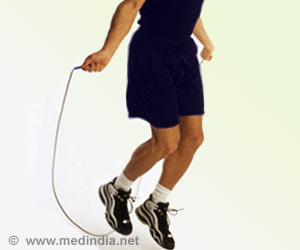A new study funded by the Wellcome Trust suggests that human visual memory is not as sharp as previously believed, but it can be used more flexibly than earlier thought.
Human visual memory is not as sharp as previously believed and can be used more flexibly than earlier thought, a new study funded by the Wellcome Trust has found.
Appearing in the journal Science, the study focused on how people would remember what they saw, and why they could recall visually important or striking images most clearly.The researchers used a topical example of a relay race to illustrate the concept.
According to them, scientists have long believed that people are only able to store a very limited number of objects in their working memory-which can be held for a few seconds after looking at a scene-while looking at a visually "busy" scene.
While the figure was believed to be four or five objects, data from a recent paper suggested that it could be as low as two objects in any one scene.
Researchers at University College London now say that humans' visual working memory is not restricted to a limited number of objects, but it usually gets shared out across the whole image.
The researchers say that people allocate more memory for objects of interest, and less for background detail.
Advertisement
According to them, less important details like the athletes' clothes and members of the other teams would be allocated less memory, and recalled less clearly.
Advertisement
"It's all about allocating working memory to the things that are most important. When something grabs our attention, we automatically divert some of our working memory to it in case it turns out to be important. In other words, it gets the lion's share of memory resources," says Dr. Paul Bays, lead author of the study.
During an experiment, the researchers asked the participants to look at a computer screen featuring a number of objects. The screen went blank after a while, and one of the objects reappeared, though in a slightly different place. The subjects had to determine whether it had moved to the right or left.
While the accuracy with which the participants could recall the original object's position decreased with the number of objects in the scene, there was no sharp drop in performance at a limit of four objects.
"When we look at a scene, we don't remember every detail, only the broad gist and one or two specific details. We allocate very small portions of our memory to the background and far more to the important details. If you test people, you find that they have very little knowledge of the details of what they just saw because their visual memory is so limited," says Professor Masud Husain, a Wellcome Trust Senior Fellow in Clinical Research.
"Limited memory puts clear limitations on what we actually see, rather than what we think we see. Seeing involves looking at objects and storing them briefly in our working memory. But that memory is incredibly small, so what we actually see is extremely restricted. Our vision is determined not just by what we look at, but by our memory of the scene," Husain adds.
The researchers also observed that the volunteers could more accurately recall the location of the object that they were about to look at than the one that they had just been looking at.
"When we decide to look at an object, we clearly perceive it as being significant and reallocate our memory to it. So, even though we haven't looked at it yet, we still remember more about it than the object we've just looked at," says Dr Bays.
Source-ANI
RAS/L









